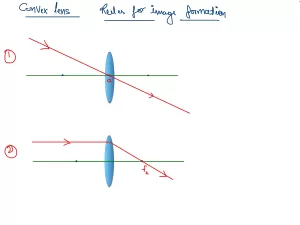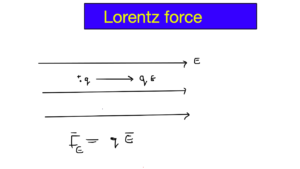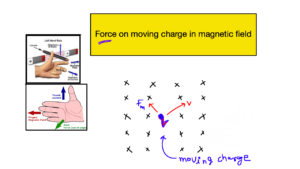Alkaline metals include following elements
- Beryllium
- magnesium
- calcium
- strontium
- Barium
- Radium
alkaline earth metals on periodic table
Alkaline earth metals group is also indicated in the image mentioned below

image credit : periodictableguide.com
Atomic and ionic Radii of alkaline earth metal
Due to charge and the addition of an electron to the samne energy level ,both ionic and atomic radius decreases down the periodic table
Ionization Energy
they can donate all their valence electron to form an octect nobel gas configuration
Reaction of Alkaline earth metals
1. Reaction with water :
Mg + H2O → MgO + H2 or, Mg + 2H2O → Mg (OH)2 + H2
Ca + 2H2O → Ca(OH)2 + H2
2. Formation of oxides and nitrides
Be + O2 (air) +Δ→ 2BeO
3Be + N2 (air) +Δ → Be3N2
Mg + air + Δ → MgO + Ng3N2
3. Formation of Nitrides
3M + N2 + Δ → M3N2
Be3N2 + Δ → 3Be + N2
Ba3N2 + 6H2O + Δ → 3Ba (OH)2 + 2NH3
Ca3N2 + 6H2O + Δ → 3Ca (OH)2 + 2NH3
4. Reaction with hydrogen:
2M + 2H2 + Δ → 2MH2
Both BeH2 and MgH2 are covalent compounds having polymeric structures in which H – atoms between beryllium atoms are held together by three centre – two electron (3C – 2e) bonds as shown below:
5. Reaction with carbon – (Formation of carbides)
When BeO is heated with carbon at 2175 – 2275 K a brick red coloured carbide of the formula Be2C is formed 2BeO +2C xrightarrow[]{2175 – 2275 K}Be_2C +2CO
It is a covalent compound and react water forming methane.
Be2C + 4H2O → 2Be (OH)2 + CH4
6. Reaction with Ammonia:
Like alkali metal, the alkaline earth metals dissolve in liquid ammonia to give deep blue black solution from which ammoniates [ M (NH3)6 ]2+ can be recovered.
Anamolous Behaviour of Beryllium:
Be is harder than other members of its group..
Be is lighter than Mg..
Its melting and boiling points are higher than those of Mg & other members..
Be does not react with water while Mg reacts with boiling water..
BeO is amphoteric while MgO is weakly basic..
Be forms covalent compounds whereas other members form ionic compounds..
Beryllium carbide reacts with water to give methane whereas carbides of other alkaline earth metals gives acetylene gas..
- Be2C + 4H2O → 2Be (OH)2 + CH4
- Mg2C2 + 2H2O → Mg (OH)2 + C2H2
- CaC2 + 2H2O → Ca (OH)2 + C2H2
Beryllium does not exhibit coordination number more than four as it has four orbitals in the valence shell. The other members of this group has coordination number
Diagonal relationship of Be with Al:
Unlike groups – 2 elements but like aluminium, beryllium forms covalent compounds.
The hydroxides of Be, [Be(OH)2] and aluminium [Al(OH)3] are amphoteric in nature, whereas those of other elements of group – 2 are basic in nature.
The oxides of both Be and Al i.e. BeO and Al2O3 are high melting insoluble solids.
BeCl2 and AlCl3 have bridged chloride polymeric structure.
The salts of beryllium as well as aluminium are extensively hydrolysed.
Carbides of both the metal reacts with water liberating methane gas.
- Be2C + 4H2O → 2Be (OH)2 + CH4
- AI4C3 + 12H2O → 4Al (OH)3 + 3CH4
The oxides and hydroxides of both Be and Al are amphoteric and dissolve in sodium hydroxide as well as in hydrochloric acid.
- BeO + 2HCI → BeCI2 + H2O
- BeO + 2NaOH → Na2BeO2 + H2O
- Al2O3 + 6HCI → 2AICI3 + H2O
- AI2O3 + 2NaOH → 2NaAIO2 + H2O
Like Alimunium, Beryllium is not readily attacked by acids because of the presence of an oxide film. Calcium Carbonate (CaCO3):
It occurs in nature as marble, limestone, chalk, coral, calcite, etc. It is prepared as a white powder, known as precipitated chalk, by dissolving marble or limestone in hydrochloric acid and removing iron and aluminium present by precipitating with NH3, and then adding ammonium carbonate to the solution; the precipitate is filtered, washed and dried.
CaCl2 + (NH4)2CO3 →CaCO3 + 2NH4Cl
It dissolves in water containing CO2, forming Ca(HCO3)2 but is precipitated from solution by boiling.
CaCO3 + H2O + CO2 –> Ca(HCO3)2
Chemical Properties of Alkali Earth Metals:
1. Reaction with water :
Mg + H2O → MgO + H2
or, Mg + 2H2O → Mg (OH)2 + H2
Ca + 2H2O → Ca(OH)2 + H2
2. Formation of oxides and nitrides
Be + O2 (air) +Δ→ 2BeO
3Be + N2 (air) +Δ → Be3N2
Mg + air + Δ → MgO + Ng3N2
3. Formation of Nitrides
3Mg + N2 + Δ → Mg3N2
Be3N2 + Δ → 3Be + N2
Ba3N2 + 6H2O + Δ → 3Ba (OH)2 + 2NH3
Ca3N2 + 6H2O + Δ → 3Ca (OH)2 + 2NH3
4. Reaction with hydrogen:
M + H2 + Δ → MH2








